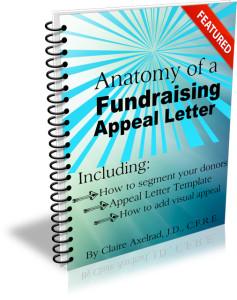Most nonprofits don’t mail often enough.
How often is enough?
Well… if there was one quick answer I wouldn’t have needed to write a whole article. I’d just have given you a headline with a definitive response!
I know you want a definite answer.
And I could give you one. But it wouldn’t be the truth. Because the truth is different for every nonprofit.
And the truth will even be different for your nonprofit at different points in your life cycle.
There are five definitive things I can tell you:
- You are not your donors.
- Your donors lie.
- Opinions don’t matter; tests do.
- Out of sight is out of mind.
- What, how and who you mail to matters.
You Are Not Your Donors
Have you ever written a fundraising appeal “by the book,” only to have your Executive Director or your Board President tell you they would never respond to it?
I hope you know by now that when it comes to crafting your direct mail appeal, whatever you or your leaders hate is probably exactly the right thing to send to your donor prospects.
- Because your donors don’t live and breathe your cause the way you do.
- Because your donors don’t speak in jargon the way you do.
- Because your donors need to be sold on things you already believe.
- Because your donors have a lot of causes competing for their attention, and you aren’t already at the top of their list.
Have you ever had your board urge you to change your branding or advertising because they’re “tired” of it?
I hope you know by now that your target audiences tire of things far less quickly than do you.
- Because, again, your donors don’t live and breathe your cause.
- Because your donors don’t see your brand or your ads every minute of every day.
Your Donors Lie
When asked how often they’d like to be approached by nonprofits with which they’re affiliated, most people will predictably say once a year.
This is a great way to lose your donors. Why?
- Because how people say they’ll behave is often quite different from the way they’ll actually behave.
- Because you presented your donors with the wrong question; you should have asked them what they care about most and they’d then likely welcome more contact.
Years ago there was a famous door-to-door study where survey researchers knocked on people’s doors and asked them what magazines they read. Wanting to look “smart,” people answered with things like “Time” and “Life” and “The New Yorker.” Then researchers looked in their trash cans. They found all sorts of “junk” and “gossip” literature that none of the respondents mentioned.
What people want you to think about who they are, and who they actually are, are often different things.
Opinions Don’t Matter; Tests Do
The only way to determine how your donors will behave is to experience it.
And this means testing.
You can look at tests done by other organizations as a starting point. For example, it’s not unusual for large organizations who’ve done this testing to mail monthly appeals, with 3 – 4 relationship-building (aka “donor love“) emails in between! Is this right for you? The only way to know is to test it for yourself. However, it’s not a bad place to begin.
Donors who give to large organizations are often the very same prospects you’re hoping to reach. They’re used to hearing from the nonprofits they support on a consistent basis. So how are you going to compete for their attention?
Remember, you can always offer folks the option of unsubscribing from your mailings. When you comply with this request, you score points for doing what you say you’ll do. This builds trust. And the reality is that very few folks will decide to unsubscribe. Those who do probably weren’t going to give to you anyway.
Out of Sight is Out of Mind
The best time to mail again is right away.
Donors who make their first gift are testing you. They’re waiting to see how much you’ll value their support and whether you’ll deliver on your ‘promise’ to make effective use of their gift.
They need to be reassured, right away, that they made a good decision. Begin with a prompt, personal thank you. This establishes trust, which is the foundation of any lasting relationship. Show them you received the gift, it had its intended impact, and you’re super appreciative. Don’t stop with the thank you.
Research shows one of the biggest predictors of subsequent giving is the recency of the previous gift. You shouldn’t waste this giving window. The first 45 – 90 days are critical.
Of course, you can’t only ask. You also must thank, recognize, praise and offer up little gifts. Content your donors can use. Invitations to free events. Opportunities to advocate or volunteer. Remember: 3 – 4 communications for every ask. Which means you have your work cut out for you when it comes to building your ongoing communications (aka “Donor Love and Loyalty Plan“).
You can mix things up with multi-channel communications such as social media and texts. When it comes to asking within the critical window of recency, if nothing else make a soft ask within that time frame (e.g., by inserting a tribute giving remit envelope in a mailing; asking in an e-newsletter, or linking folks via social media to a donation landing page).
People may not read every message you send, but this doesn’t mean they don’t like receiving them. In a way, it reassures them you’re still a healthy, vibrant organization that’s out there in the community doing good things.
If you stop communicating, people are left to draw their own conclusions.
What, How and Who you Mail to Matters
In fact, it matters as much, or more, than how often you mail.
Instead of trying to find excuses to communicate with folks less, how about finding ways to communicate more effectively?
Many times when people ask me how often they should mail and ask for donations they’re really asking why they aren’t raising more money. Are they offending folks by sending too many mailings? Are they pussyfooting around by not sending enough? Often, those are the wrong questions.
Because as soon as I take a look at their appeal… or as soon as I ask them who is on their mailing list… or as soon as I ask them what other communication channels they are using to leverage greater support… I can tell why they aren’t generating larger returns.
- If your mailings are institution-centered (all about you and how great you are) you’re not going to achieve the results you’ll get if you make your appeal donor-centered (all about your donor and how they can be a hero by investing with your cause).
- If your mailings are generic, and you’re not using segmentation to send the most personal, relevant appeals possible, then your appeal is not going to be as engaging as it needs to be.
- If you’re sending snail mail to people whose primary means of communication is email or social media you’re not maximizing your chances for success. Especially if you’re targeting younger donors, an approach through social media using peer influence may work better.
- If you don’t have the right people, or enough people, on your mailing list you’re not going to have great chances to achieve your desired results. I’ve seen many wonderful fundraising appeals fail for want of a good mailing list.
Practical Advice for Mailings
If you make more money with your mailing than it costs you, then why not?
More is usually more.
I like to mail as often as I can afford to do so (taking into account both human and financial resources).
If you think you should be netting an even larger profit, then it’s time to take a look at what you’re mailing, who you’re mailing to and how you’re getting your message across.
Quarterly offline mailings (not including newsletters) is just about the minimum I’d recommend for any nonprofit if you want to stay top-of-mind. And one or two emails monthly is certainly not out of bounds. As you expand services and need to raise more money, expanding the number of mailings you send makes a lot of sense.
Layering on social media to reinforce the message in your mailing is generally a good idea. Have you ever heard the “Rule of Seven” maxim that someone needs to see an ad seven times before they take action? There’s no research I’ve found that shows where this number came from, but I’m pretty sure it takes more impressions than that in today’s zeitgeist. Because that was the rule before the digital revolution. Today folks are exposed online to thousands of ads daily.
Think about what you can do to stay relevant and top of mind.
Stop thinking of your appeals as begging.
Start thinking of your appeals as announcements of opportunities to share your joy.
Do you feel joy when you give to your cause?
Remember, fundraising is not about money per se. The point of your mailing is simply to serve your end goal, making it possible to finance the programs and services upon which your community relies.
Fundraising is your reward for being successful. For making a difference. Because if that’s the outcome your organization creates, then you’ve earned the right to raise funds. In fact, you have a responsibility to do so — because folks rely on you.
Hank Rosso, who I consider the Daddy of modern fundraising, famously said: “Fundraising is the simple art of teaching the joy of giving.”
As opportunities to share in your remarkable cause arise, turn your announcements into offers people simply cannot refuse!
Don’t be stingy with your joy.
Want to learn to create remarkable appeals?

This 62-page guide will take your appeal letter from run of the mill to out of the ballpark!
Grab my Anatomy of a Fundraising Appeal + Sample Template. It’s a simple, step-by-step guide to crafting a killer appeal letter. Get it here.
- Use it to craft your compelling appeal letter.
- Use it to create a fundraising offer your donor won’t be able to refuse.
- Use it to tweak your year-end fundraising.
- Use it all year.
Thank you for all you do to make our world a better, more caring place. Now go forth and spread the joy of giving!
A version of this article first appeared on Clairification November 24, 2014





